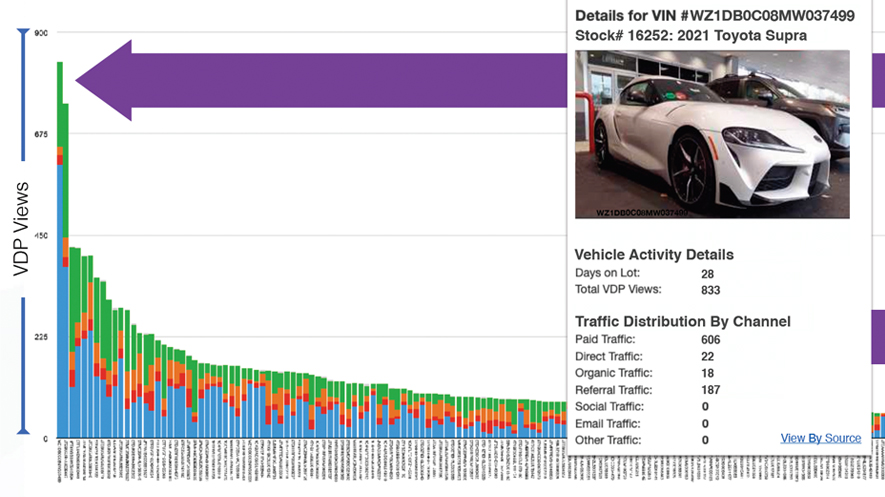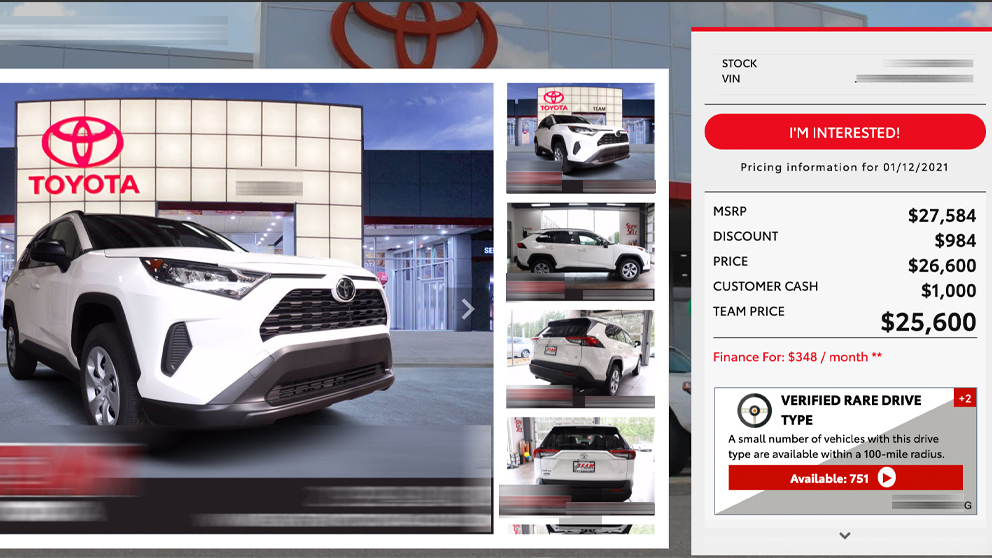Three Ways Dealerships Fall Short Marketing Their Cars (And How to Fix the Problems)
Obviously, there’s a lot of competition out there. You compete with Dealerships from other OEM’s, dealerships from the same OEM’s – heck some of you even have to compete with dealerships within your dealer group, and why not, competition is good – especially when you win!
With all of this competition, you and your dealership need to stay ahead of the curve. Being that you are reading this blog, you are already a step ahead.
Here are three ways that I’ve seen dealerships fall short with their marketing and how you can fix the problems.
Investing in ads that drive traffic to generic offer pages (or worse, the Homepage of your site)
What is it?
Traditional display advertising or generic SEM advertising that drives traffic to a non-specific landing page on the dealership’s site.
Why it’s ineffective
Here’s the problem: buyers can’t indicate interest in a specific car on typical landing pages. They can only do that on VDPs and some SRP’s (which is one reason these pages are so important). This means you’ll need to get this buyer to a VDP from the landing page. On most sites this process can take up to 4 steps: The landing page, the search page, the search result page (SRP) and then (finally) the VDP.
Any digital marketer worth their salt will tell you that the more pages a person needs to navigate to find the information they’re looking for, the more site abandonment you can expect. Assuming half of the traffic continues on after each page, you can only expect about 12.5% of traffic coming from a landing page to ever reach a valuable VDP.
What you should do
Aim to invest into ads that drive traffic directly to your VDP. By doing this, you eliminate site abandonment and effectively only pay for ads that bring you highly valued VDP traffic.
Targeting your advertising only based on demographics & psychographics
What is it?
Any targeting based on zip, age, sex, income or any other demographic as well as using general psychographic variables such as, promoting minivans in parenting content and Accords or CRV’s in seniors content. Targeting methods like these are very prevalent in social media advertising or when investing in ad space with specific publications. If you’re thinking social, the term used most today is to buy a “Like” audience. These people are “Like” these other people so let’s show them the same stuff. Sounds good enough, right? …but as we mentioned, there is a ton of competition out there so good enough – isn’t any good!
Why it’s ineffective
When you target by demographics and psychographics, you are painting everyone in that category with the same brush. By doing so, you completely disregard the buyer’s personal preferences, and people are unique. You don’t have to look far to see examples how this type of targeting falls short.
Simply look to your peers: do they all drive the same type of car? Of course not. Even though they are similar to you, they all have their individual preferences. Some like trucks, some like sedans, some like coupes, some even prefer minivans, though I have trouble imagining why. As I have mentioned in previous articles and blogs, my favorite example is my Mother-in-Law (who is nearly 70 and a grandmother to 5 kids) has her eyes on the Dodge Charger SRT for her next car. Go Grandma Go!!
What you should do
Try to target based on behaviour, real live action from an individual. The easiest way to do this is to use an ad technology that builds the profile of each buyer it encounters using a Data Management Platform (DMP). Marketers talk about segmentation of demographics and psychographics to find the right group of people more likely to have an interest in your cars. Whereas, today’s ad technology allows for a segment of 1. This allows your ads to be served only to people who have an interest in the vehicles you have on the lot. By targeting the actual behaviour of the buyer (rather than the demographics or psychographics of potential buyers), the traffic generated in this way has a significantly higher probability of filling out a form or performing other meaningful actions on your site. This effectively increases your conversion rate and reduce your CPA
Only targeting active car buyers
What is it?
Only investing in SEM or in listings advertising.
Why it’s ineffective
The cost of purchasing a vehicle makes impulse buying prohibitive for most people. As a result, car buyers will spend numerous hours researching and selecting the vehicle that best fits their needs. This process takes 60 to 90 days (if not more, the last time it took me six months – I’m way too analytical). During this research and selection period, there will be times where the buyer isn’t “actively” shopping for their car; they’ll be on sports sites, news sites, celebrity sites like TMZ (checking out the latest Justin Bieber debacle) or any number of other sites that aren’t Auto specific sites. By only promoting your inventory through SEM, listing sites or other “active shopping” environments you are missing a massive opportunity to get your right vehicles in front of the right buyers.
What you should do
Get to in-market buyers no matter where they are online. Choose an ad technology or agency that will promote your inventory to buyers during all phases of the purchase path and to all areas of the internet – not solely on SEM or listing sites. This ensures that your dealership and your vehicles are always top of mind for an in-market car buyer.
By avoiding all (or, at least, some) of these short falls, you can increase the effectiveness of the ads you run, drive quality traffic to your website and, ultimately sell more cars.







